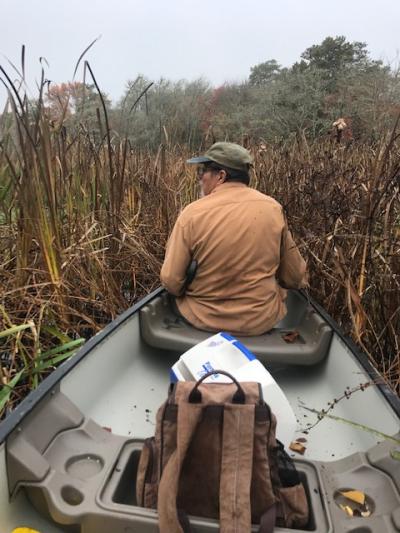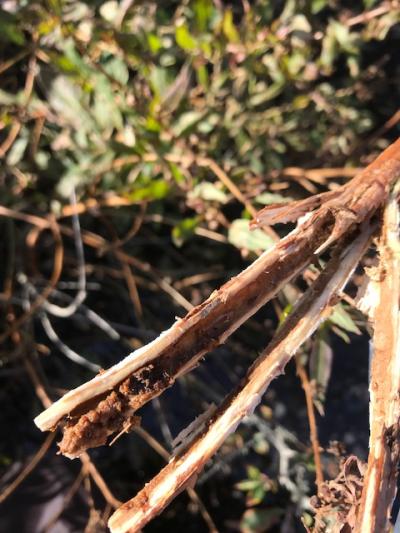Lloyd Center Returns to Herring River by Jamie Bogart, Lloyd Center Research Associate
The Lloyd Center for the Environment (in particular former Research Director Mark Mello), in carving a unique niche of extensive Lepidoptera research, has a history of tracking the status and progress of a particularly storied moth species, the “Water Willow Stem Borer” (Papaipema sulfurata). The moth has very specific habitat requirements, with larvae feeding on and pupating in the stems of Water Willow (Decadon verticillatus), a plant found in a variety of wetland habitats. The moth is listed as “threatened” under the Massachusetts Endangered Species Act, and is endemic to the southeastern section of the state, found in Plymouth and Bristol Counties and the Cape and islands (NHESP 2007).
One of the threats is habitat loss through hydrologic alteration, such as that which has long been in the works through planned dam removal at the Herring River in Wellfleet, where the Lloyd Center did work in 2005 and 2015. The gradual removal of the dam will increase tidal flows to the river, ultimately transforming the current mix of freshwater and estuarine wetlands to salt marsh-dominated habitats. This will improve habitat for taxa such as herring, which migrate up the river to spawn, but habitat for the rare moth will be lost. In a collaborative involving the “Friends of Herring River”, the National Park Service, and the Lloyd Center, the objective is to quantify the amount and quality of Decadon habitat, and actual evidence of the moth, to assess the extent of habitat loss from dam removal, and target habitats in the watershed with the highest conservation value for the species.
The Lloyd Center started this survey in late September, to continue into November, plotting locations where Decadon exists and the moth cocoon or stem “hole” is confirmed. Thus far we’ve kayaked up the mainstem and tributary, and traversed by foot the floodplain and side creeks, determining the extent of the host plant, and whether or not the stems are likely to be hospitable to the moth.
While much of the area has become overgrown with shrubbery (hence the need for clippers when on the water) or Phragmites since the last survey, extensive Decadon has been found. Long stretches of optimal habitat exist along the banks of a tributary and side creeks, with a large increase in Decadon of slightly lower quality found on the river mainstem just west of Route 6, where a plant called “watercress” has also formed a dense mat that makes for a vigorous paddle. Approximately nine records of the moth have been confirmed thus far with more to surely come before the entire survey is complete.
In addition to the target species, other dragonflies and moths have been observed, including the Buck Moth, whose barrens subspecies is also endangered (this is likely the New England subspecies), and a variety of bird life. The Lloyd Center is excited to be a part of this major cutting-edge project, and looks forward to more discoveries!
















